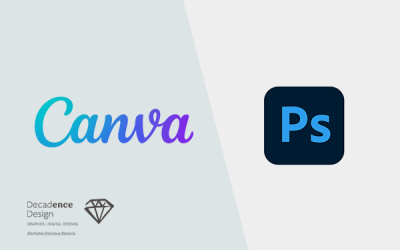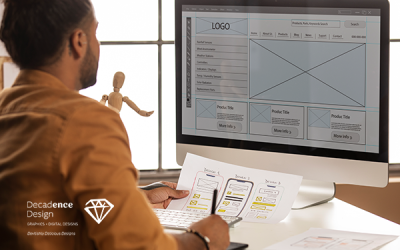Design is a creative endeavour but it doesn’t give the designer free reign to brandish his mouse and go crazy with colours, fonts, space, alignment, etc. Design always has a purpose and certain rules are in place to ensure that designs serve their end goal – usually, to INFORM.
Humans are visual animals – not everyone is a professional designer but people can immediately tell when a design is unbalanced, unattractive, amateur-ish or confusing. When a design appears as such, consumers are not too keen to connect with that particular brand or are turned off by the unsatisfactory user experience when interacting with the designs.
It’s hard to predict what works and what doesn’t but we have put together a list of 9 Design Don’ts that you should definitely avoid.
- Making Poor Typography Choices
There is a world of fonts out there but designs should not go crazy with them!
- Always use a company’s corporate font when possible.
- When given the liberty to choose fonts, cut down the use of multiple typefaces, choose typefaces with good readability and always use types that matches the mood and tone of the content.
- The general rule-of-thumb is to stick to 2-3 fonts per project
- Pair fonts that complement each other
- Play with serif and sans serif to create visual interest
- Being Lax on the Proofreading
Typos on a final artwork are a nightmare for all parties – the designer is pulling his hair because the “final changes” aren’t final at all, the copywriter is agonising over his lack of precision, and the client is worried about the quality of the final product. NEVER be lax on the proofreading. Typos on the final artwork is the mark of amateur and slip-shot work. Besides, proofreading mistakes can be costly – imagine printing thousands of posters only to find that they contain errors!
- Not Embracing White Space
White space is a key design element and the more designers learn to embrace them, the better their designs become.
- Group similar elements and set them apart from others
- Design with a leading and body copy in mind
- Use white space to enhance readability, de-clutter and draw the user’s eyes to the point of focus.
- Not Understanding the Target Audience
Before embarking on any new designs, be clear about the target audience and the objectives of the design. The better you define these, the better your design and the easier ideas flow. Make it easy for yourself by doing the hard part well – research thoroughly on the target audience and client objectives. Go a step further to visualise the customer through user personas and be firm about communicating the key messaging.
- Neglecting Visual Hierarchy
A design with exceptional use of visual hierarchy is able to communicate the importance of each design element and each piece of content to the audience. It is a design that is easy on the eyes while driving home an impactful message. To determine visual hierarchy, go back to your understanding of the target audience and what your design hopes to achieve.
- Not Creating Contrast Within a Design
Do not forget about one of the principles of designs – contrast. Contrast helps with visual emphasis and when done correctly, creates a solid, powerful message.
- Create contrast with sizes, white space, shades, type, alignment and layering
- Forgetting the Medium
Design with the platform in mind because the target audience interacts differently with each platform – web, mobile, print. Think of user flow for each medium and design from there. A one-size-fits-all design no longer works in today’s context so adapt your designs for maximum user engagement.
- Lack of Consistency
For a consistent experience and strong branding to imprint the brand into the customer’s mind, ensure consistency throughout your designs. Follow or create a corporate identity guide and use it religiously.
- Relying on Stock Images
Images are good – they are visual, they attract attention and they communicate the message quickly. While a convenient, free and easy method, stock images do not set your designs apart and instead, puts your designs at risk for looking too generic and uninteresting.





